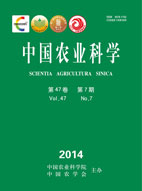-
Study on Marginal Profits of Traits in the Breeding Goal in Sanhe Cattle
- MA Qiu-Meng-1, 2 , QIN Chun-Hua-1, 3 , WU Hong-Jun-4, LIU Ai-Rong-5, WANG Ya-Chun-1, SHI Yuan-Gang-2, ZHANG Sheng-Li-1
-
Scientia Agricultura Sinica. 2014, 47(7):
1409-1416.
doi:10.3864/j.issn.0578-1752.2014.07.018
-
 Abstract
(
565 )
Abstract
(
565 )
 HTML
(
5 )
HTML
(
5 )
 PDF (523KB)
(
885
)
PDF (523KB)
(
885
)
 Save
Save
-
References |
Related Articles |
Metrics
The Sanhe cattle is a domestic dual purpose breed formed and approved in China in 1983, which was named after its origin of Sanhe region in Hulunbuir pasture land. Sanhe cattle is famous for its durability, suitability for grazing, cold resistance and strong adaptability. This study was conducted to estimate the marginal profits of traits in breeding goal and provide a base for designing breeding plan in Sanhe cattle. 【Method】 The performance, economic and nutrition parameters of Sanhe cattle were obtained according to theoretical nutrition demand of dairy and beef cattle, as well as the production and breeding data in 2011 from Xiertala Cattle Breeding Farm in Inner Mongolia, China, which are the central production region of this breed. Also, the breeding objective traits were proposed based on the production and breeding system of Sanhe cattle. A bio-economic profit model was fitted using Profit Equation method, and the marginal profits were calculated for the milk performance, beef performance and functional traits, then the sensitivity analysis was run. 【Result】The results indicated that ten breeding objective traits for Sanhe cattle included three milk performance traits (milk yield, fat percentage, and protein percentage), three beef performance traits (birth weight, fattening daily gain, and dressing percentage), and four functional traits (somatic cell count, age at first calving, calving interval, and productive life). The total profit of Sanhe cattle was RMB 4 808.26 with a fixed scale of the population. The profit generated by milk production, culling cows and fattening bulls account for 67.08%,7.8% and 20.58% of the total profit, respectively. For the cost, the variable cost accounts for 96.89% of the total cost. Feeding cost is the main factor affecting the variable cost. The feeding cost of the heifers, milking cows and fattening bulls account for 45.69%, 20.46%, and 13.15% of the total cost, respectively. When raw milk price considering milk compositions and quality (fat percentage, protein percentage, and somatic cell count), the marginal profits of objective traits in Sanhe cattle were RMB 2.26 (milk yield, MY, kg), RMB 40.48 (fat percentage, FP,%), RMB 61.39 (protein percentage, PP,%), RMB -231.52 (somatic cell count, SCC), RMB 6.19 (birth weight, BW, kg), RMB 1.39 (fattening daily gain, FDG, g/day), RMB 76.70 (dressing percentage, DP, %), RMB 0.25 (productive lifetime, PL, day), RMB -1.62 (age at first calving, AFC, day), and RMB -2.71 (calving interval, CI, day),respectively. The relative economic weights for milk performance, beef performance and function traits is 62﹕14﹕22, closing to 3﹕1﹕1. With the increase of 10% of the milk price, the marginal profits of MY and CI increased by RMB 0.29, RMB 0.17, respectively; with the increase of 10% of the beef price, the marginal profits of BW, FDG, DP and CI increased by RMB 0.81, RMB 0.15, and RMB 7.86, respectively and PL decreased by RMB 0.03; with the increase of 10% of the feed price, the marginal profits of MY, FP, PP, BW, AFC, FDG decreased by RMB 0.05, RMB 0.58,RMB 0.34, RMB 0.21, RMB 0.16, and RMB 0.01, respectively and CI and PL increased by RMB 0.88 and RMB 0.06, respectively. 【Conclusion】Change of market price would largely affect the marginal profits of milk and beef production in Sanhe cattle. The bio-economic profit model derived from this study will provide a reference for dual purpose cattle breeding in China and a basis for development of breeding goals for Sanhe cattle in the future.









